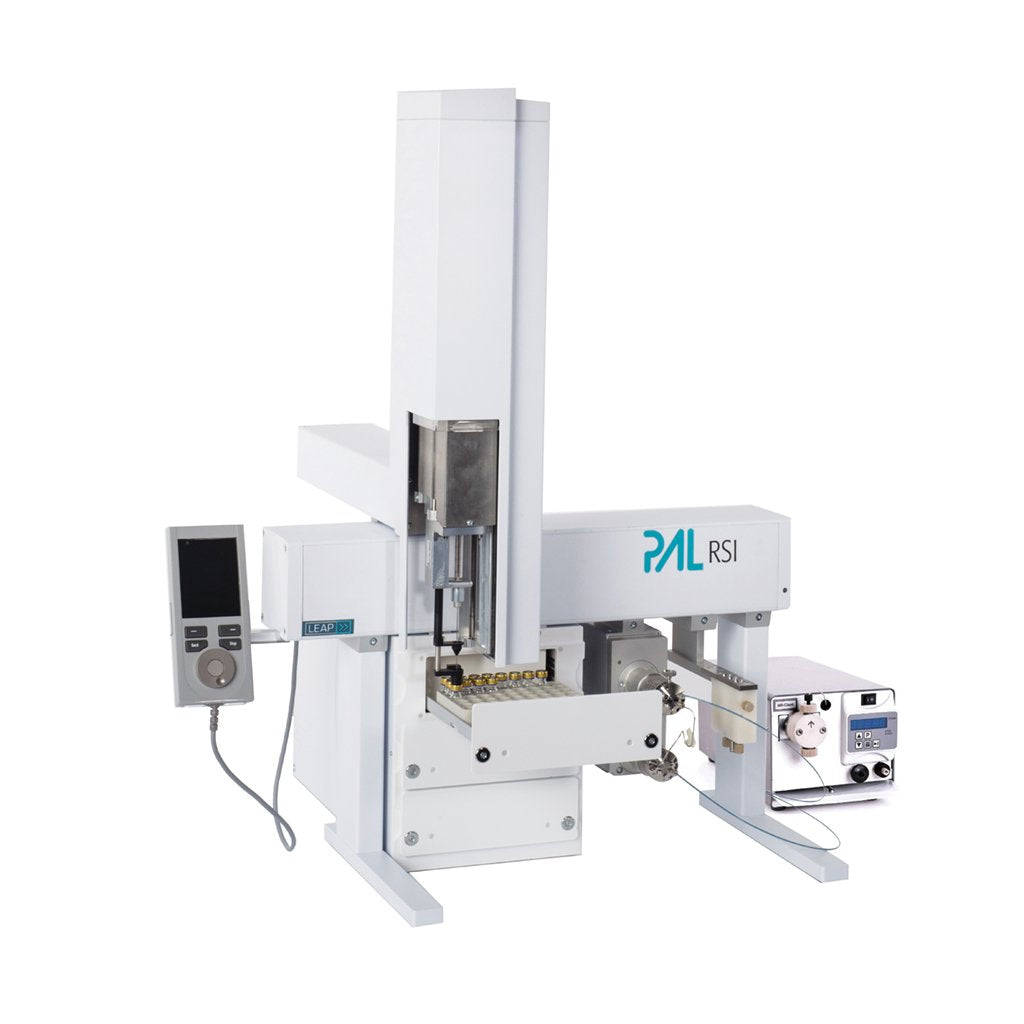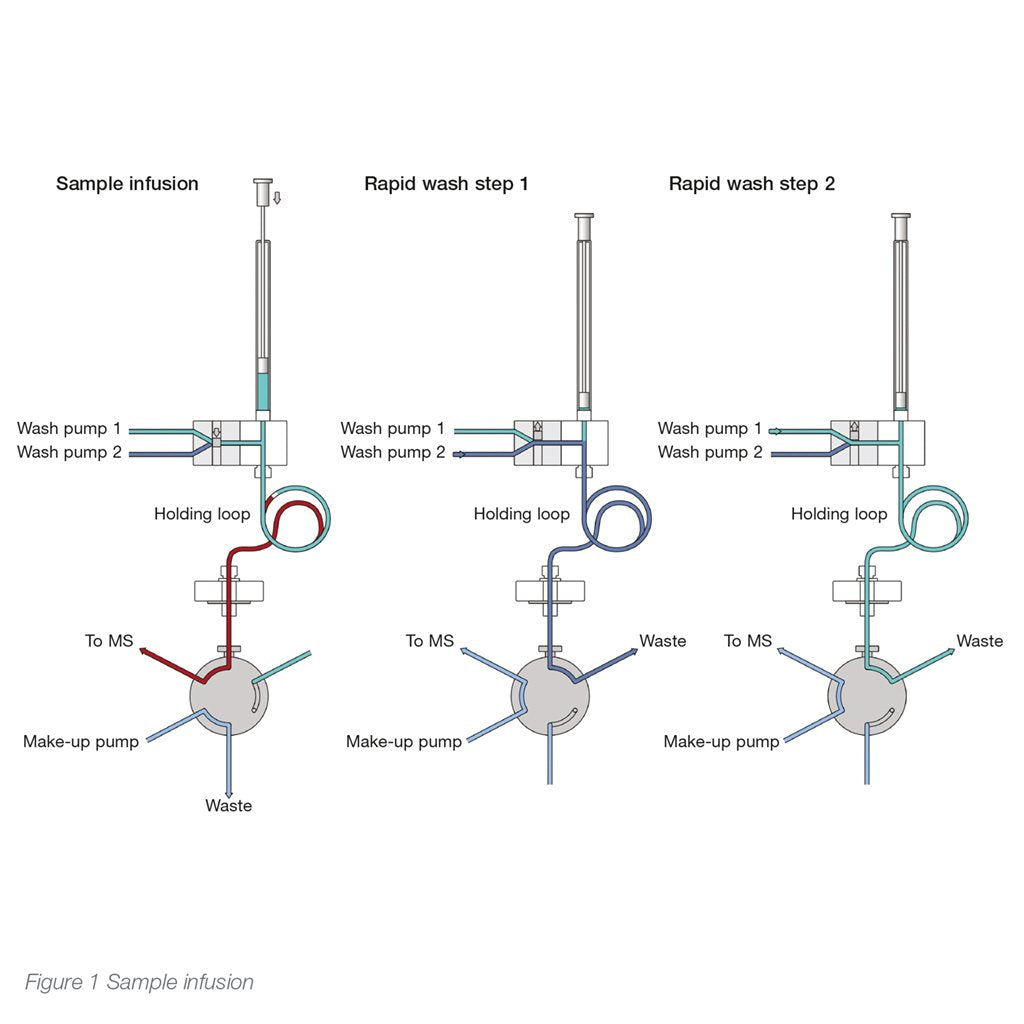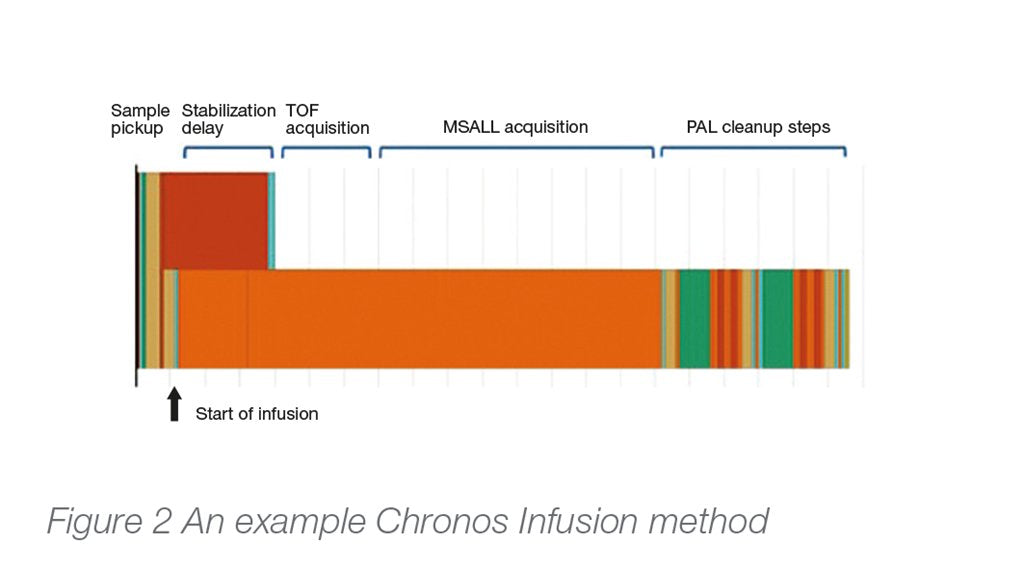


CHRONECT™ infusion automation
Image is representative (may not be specific item).
Expert infusion automation for your high sensitivity metabolomics and lipidomics experiments
High-throughput, high sensitivity and low carryover: the new infusion automation from Trajan offers you everything you need to bring your lipidomics mass spec workflow to its peak performance.
Move from manual sample infusion to the highest standard of infusion automation. With rapid cleanup between injections and best-in-class software architecture to integrate into your workflow, our infusion automation will elevate your lipidomics experiments.
Features and benefits
- High throughput
- High sensitivity
- Low carryover
The most consistent and flexible system available for infusion automation
Fully customizable infusion eliminates carryover concerns while saving you time. Allows for sample infusion at flow rates between 5 and 100 µL/min — directly into your ESI source via the injection valve — precisely and without pulsation. Compatible with both shotgun and targeted lipid analysis.
The powerful Chronos software can execute important operational and integration functions such as reading and reporting to LIMS software, as well as MS acquisition mode switching within a single infusion. The system maintains flow to the source while quickly and thoroughly washing the syringe system for the next infusion.
Exclusive inert configuration is available for your trickiest lipid classes — ensuring your samples never come into contact with any polymers.
“We just ran a whole pile of samples. It ran 24/7 without a hitch. Very reliable.” - Calvin Vary, PhD, Proteomics and Lipidomics Core Facility Maine Medical Center Research Institute, Maine, USA.
More
CHRONECT™ PAL injector
Upgrade sample throughput without worrying about carryover
The CHRONECT™ PAL injector head is a syringe pump itself, making it the ideal sample delivery system for ESI flow rates, unlike conventional HPLC pumps.
Many lipids are notorious for their adherence to glass and other surfaces resulting in carryover between samples. The special LCMS syringe tool incorporates unique features to minimize this carryover to below 1% for the abundant neutral and phospholipids and even lower for other species.
The illustration below shows how this rapid washing is achieved. After washing the inside, the system will wash the needle externally and be ready to aspirate the next sample.

Figure 1 Sample infusion
Software
Greatest experiment control with powerful, user-friendly software
The infusion process is controlled using our Chronos software, allowing maximum compatibility with your preferred Chromatography Data System, LIMS and MS data systems.
Method parameters are available for flow rates, infusion times, stabilization delays and cleanup conditions, MS acquisition method switching.
With an optional second valve, standard chromatography methods can be used in the same sequence with direct infusion samples.

Figure 2 An example Chronos infusion method
Specifications
| Specifications | |
|---|---|
| Flow rate range | 5-100 μL/min. |
| Sample formats | Sealed and unsealed vials (1 mL, 2 mL, 10 mL); sealed and unsealed plates (96 and 384-well). |
| Optional features | Sample cooling drawers (4-40°C), inert flow path, second valve for chromatography autosampling |
| Sample capacity | Expandable capacity, from three plate tray holder, to 6 or 12 plate drawer stack(s). Capacity depends on vial/tray formats and drawer configuration, maximum 4 stacks |
| Signal stability | Signal stability on a single sample has been demonstrated for 20 minutes. Long term stability confirmed in successful analysis of 400 samples over a 36 hour period (5 minute injection per sample). |
| Computer requirements (minimum) | Operating system: Windows 7 SP1 (32 or 64 bit), Windows 8.1 or Windows 10. Hardware: Intel Dual Core 2.0 GHz, 60 GB hard disk, 4 GB RAM, dedicated ethernet port or free location on local private network switch with 1 free USB port for security dongle. Monitor: 1366 x 768 (recommended 1440 x 900 or 1920 x 1080). |
